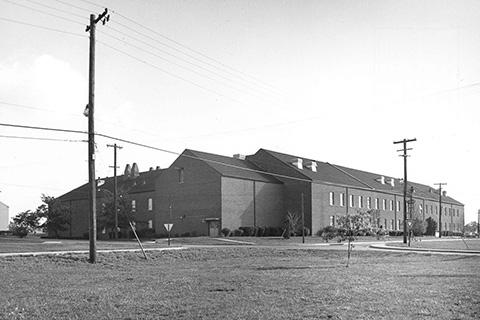Editor’s note: This is the second installment of a series about the history of the National Cancer Institute at Frederick and the Frederick National Laboratory for Cancer Research, and the first installment in a three-part miniseries about the original Basic Research Program. Please do not reproduce or repost any of the images in this article.
As the winter of 1973 turned to spring, the Frederick Cancer Research Center (FCRC), the forerunner to the Frederick National Laboratory and the National Cancer Institute (NCI) at Frederick that exist today, neared the one-year mark since its opening. The more than 250 employees had made sound progress, given the challenges of converting the old Fort Detrick biowarfare facilities into a fledgling cancer center.
Their efforts had drawn some attention, too. In January, NBC’s Tom Pettit and a film crew spent three days shooting footage and reporting on-site for the network’s First Tuesday program. Before that, in August 1972, Soviet Minister of Health Boris Vasilievich Petrovsky visited and toured the facility, much to President Richard Nixon’s apparent delight.
“Now he stood there, this man from the Soviet Union. This place has become a symbol of an open world, a world of cooperation and trust, at least in this particular area [that is, disease research],” Nixon later said of Petrovsky’s visit.
The National Cancer Advisory Board, a committee of 23 esteemed cancer experts appointed to counsel the NCI, also turned its attention toward FCRC. By early 1973, it had assembled an ad hoc subcommittee led by Sidney Weinhouse, Ph.D., director of the Fels Research Institute, to review the center and advise on improvements.
The Weinhouse Committee wasted no time. Its members visited FCRC in March and held two subsequent administrative meetings in Bethesda, Maryland, in March and June. They produced their report on June 20, just two days after their final meeting.
The verdict was favorable—but only in part.
“With regard to the [FCRC’s] overall organizational framework, at its first meeting the Committee was favorably impressed by the speed and apparent efficiency of the changeover from a biological warfare center to a cancer research center. This was carried out with excellent forethought to comply with the spirit and the letter of the charge,” the report said.
However, it also said that FCRC lacked a clear overall aim and suffered from a lack of connection between its existing programs and support groups. The committee members admitted the situation could be left unaltered, but that wouldn’t do.
“The Committee feels strongly that such a limited goal would not fulfill the hopes and expectations of the National Cancer Board that this facility might become a world-renowned center of pioneering, innovative research in cancer,” they wrote.
They proposed an ambitious solution: bring a nationally or internationally renowned scientist to FCRC to establish and direct a large, semi-independent group that could spearhead the facility’s research. They further recommended that this new director be given a $2.5 million budget, enough to fund 10–20 lead scientists and between 80 and 100 additional staff.
After tense deliberations in November 1973, the National Cancer Advisory Board accepted the report and recommendations. The NCI agreed to execute it. The initiative that would soon become FCRC’s new Basic Research Program was cleared to begin.
To be continued. Look out for the next installment next week.


